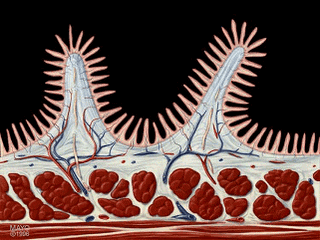Understanding celiac disease and gluten intolerance can be the key to digestive health. Dr. Wangen explains Celiac disease and other forms of gluten issues + how to treat them.
Gluten is a protein found in wheat, barley, and rye, and is responsible for the springiness and stretchiness of bread. Allergies and intolerances to gluten have been the subject of intensive research over the past decade.
Understanding Celiac Disease:
Much of this research has focused on understanding celiac disease, which is a special form of gluten intolerance. It is a hereditary response to gluten that results in a very specific type of damage to the small intestine. Common symptoms, which can mirror those of IBS, include loose stools, constipation, or both; fatigue; weight fluctuation; dermatitis; and more.
Celiac disease is diagnosed by measuring damage to the small intestine, either by blood testing or, traditionally, with a biopsy of the small intestine. A positive biopsy means that the villi, or small finger-like extensions of the intestinal lining, have been damaged; this is known as villous atrophy. However, recent studies have shown blood testing to be as accurate as a biopsy.
People with celiac disease will show a marked reduction in their villi, almost as if the villi have been worn off. Damage to the villi causes a dramatic reduction in the surface area of the small intestine, resulting in both poor digestion and the poor absorption of many nutrients.
About other forms of gluten intolerance:
Celiac disease is not the only form of gluten intolerance or allergy. Many people react to gluten by producing elevated IgG antibodies to gluten or wheat, but they do not have damage to the small intestine. Their test results for celiac disease are negative. They become quite frustrated with traditional medicine, with its narrow focus on celiac disease, because they are told that their negative test results meant that they are not allergic or intolerant to wheat, barley, or rye.
Yet when they eat a piece of bread they become sick.
Where gluten is found:
Gluten is found in nearly all bread products and all pastas, as well as in most breakfast cereals, cookies, muffins, cakes, soy sauce, pancakes, waffles, soups, sauces, and gravies. Beer, ale, lager, and stout contain gluten. Malt, malt extract, and caramel flavorings, which are used to add flavor to a wide variety of foods, contain gluten. Find a list of ingredient names for gluten here.
Treatment for Celiac + Gluten Intolerance:
The treatment for celiac disease and for a gluten intolerance or allergy is identical. It means removing all sources of gluten from the diet. This is not an easy task, because so many of our foods contain gluten.
Learn about how celiac disease is related to other autoimmune issues here.
Dietary counseling, such as that provided at the IBS Treatment Center, can make the job easier.

Article Courtesy: Dr. Stephen Wangen
Founder of the Center for Food Allergies and the IBS Treatment Center








Angie Halten says
This article lays out the basics of gluten intolerance in a plain and simple format, making it easy for all to understand